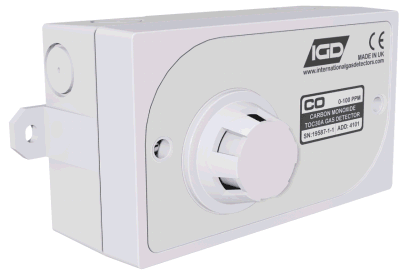Formaldehyde (CH2O) is a relatively basic chemical compound that is naturally produced in low volumes via routine cellular metabolism.
Formaldehyde is most widely known for its pronounced antibacterial properties, resulting in its application as one of the primary preservatives employed in mortuaries.
Formaldehyde solutions – whereby an aqueous mobile phase is mixed with the gas - are highly valued in a diverse array of medical research areas; for example, these solutions are regularly used to deactivate viruses in vaccine manufacturing.
Formaldehyde gas detectors are often permanent fixtures in medical labs in which effective CH2O detection is vital in avoiding any potentially hazardous occupational exposure levels.
A range of spectrophotometric, fluorometric and other methods have been specifically developed to detect formaldehyde gas in air. These often large and costly systems seldom justify their high installation costs, however, and this is primarily due to their inability to provide real-time results.
Dedicated formaldehyde gas detectors are required to facilitate the rapid detection of CH2O gas in order to safeguard occupational health and safety. Sensing units should also be easy to use so that air composition monitoring in safe areas remains a straightforward process.
The Risk of Formaldehyde Exposure
The comparative abundance of water-based formaldehyde solutions in typical medical labs is a cause for concern from an occupational health perspective.
While formaldehyde is very useful as a preservative, it remains a dangerous toxin and a systemic poison that can lead to fatal exposure, no matter how it is ingested, absorbed or inhaled.
Solutions have the potential to cause serious burns to eyes and skin, while vapors will severely irritate the respiratory tract, potentially resulting in suffocation.
Medical label technicians and healthcare professionals are equally at risk of exposure group as morticians due to the regularity with which they work with biological specimens preserved with formaldehyde-based solutions.

TOC-750 Addressable Safe Area Gas Detector. Image Credit: International Gas Detectors Ltd
Creating Safe Areas with Formaldehyde Gas Detectors
Formaldehyde is a volatile organic compound (VOC), meaning that solutions tend to off-gas at ambient temperatures. Aqueous formalin is a solution made up of approximately 40% formaldehyde in a water-based matrix.
While some disinfectants based on 5% formaldehyde are employed in hospital settings, it is the higher concentration formalin that is most often utilized in medical labs.
Controlling exposure to formaldehyde is a matter of regulatory and ethical necessity. Safe areas should be well ventilated with dedicated formaldehyde gas detectors installed to guarantee that air concentrations do not exceed safe limits.
The Health and Safety Executive (HSE) stipulates that workplace exposure limits to formaldehyde should be no more than two parts per million (ppm) over short periods. A real-time sensing platform is therefore required to comply with these limits.
Standard analog point-to-point systems are the most commonly used sensor paradigm for medical safe areas due to their straightforward functionality and familiarity.
International Gas Detectors offers the TOC-30 Analog Gas Detector, a long-term monitoring solution designed to accurately measure background atmospheres for formaldehyde within a range of 0-5 ppm.
There is increased uptake of addressable safe area detectors offering reduced wiring requirements via daisy chain sequence compatibility. Systems like the TOC-750 Addressable Safe Area Gas Detector employ unique labyrinth sensor designs, ensuring absolute accuracy in CH2O gas detection across a range of 0-5 ppm.
References
- https://www.chemicalsafetyfacts.org/formaldehyde/
- https://www.atsdr.cdc.gov/mmg/mmg.asp?id=216&tid=39#:~:text=Formaldehyde%20is%20a%20highly%20toxic,to%20the%20eyes%20and%20skin .
- https://www.ncbi.nlm.nih.gov/pmc/articles/PMC3673094/

This information has been sourced, reviewed and adapted from materials provided by International Gas Detectors Ltd.
For more information on this source, please visit International Gas Detectors Ltd.